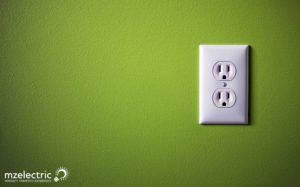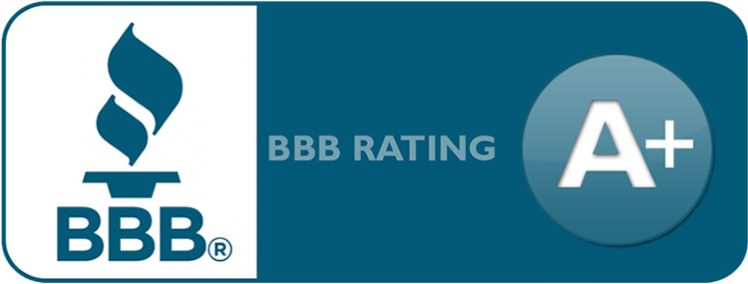5 Considerations for Replacing Outlets in Your Home
If your electricity is on the fritz and you find yourself searching Google for “electrician near me,” you’re probably already concerned about your family’s safety and the cost of electrical repairs. Most of us don’t consider the health of our electrical outlets – AKA “receptacles” – until we can actually see the problem, at which point you’ll want to consider investing in electrician services. (Psst! They don’t have to leave you with ridiculous bills!)
is on the fritz and you find yourself searching Google for “electrician near me,” you’re probably already concerned about your family’s safety and the cost of electrical repairs. Most of us don’t consider the health of our electrical outlets – AKA “receptacles” – until we can actually see the problem, at which point you’ll want to consider investing in electrician services. (Psst! They don’t have to leave you with ridiculous bills!)
To help, we’ve compiled this Outlet Repair Guide to explain:
- What’s happening in your home and potential dangers
- How many outlets you’ll want to fix
- What to consider while shopping
- The best outlets for your electrical repairs
- DIY projects vs. electrical inspections
-
What are the common signs that an outlet needs replacing?
Outlet isn’t working
Identifying the problem: If you’ve noticed your appliances “flickering” or turning off, you’ll want to figure out if your outlet is dead by plugging the device into another outlet. If it suddenly works like new, the outlet is the issue.
Fun fact: This problem can also be caused by a blown fuse or tripped circuit! Avoid unnecessary fees by performing a quick check before calling local electricians.
Solution: Electrical inspections will help you determine whether the outlet is conducting electricity with an outlet tester. If the receptacle is dead, you’ll need an outlet repair.
Plug falling out
Identifying the problem: If plugs seem “too heavy” for an outlet, it is likely a problem with the contacts inside. More than a frustrating experience, this is incredibly dangerous and can lead to fire-starting sparks or an electrical arc, incorrectly conducting electricity into charged air particles, hurting you or your pet.
Solution: It’s time for an outlet repair. Local electricians can see if any sparks have caused damage within your drywall and help you decide which outlets need replacing.
Burning Smell, Seeing Sparks, or Hot to the touch
Identifying the problem: If your outlet feels hot, you could be facing a variety of issues ranging from loose, damaged, worn, or incorrectly installed wiring. In some cases, the surrounding wall will be discolored, or you’ll see scorch marks or melted plastic near the outlet. Additionally, if you are smelling or seeing signs of smoke or fire, you’re likely seeing the results of a short circuit or an outlet that has been exposed to water. These are all extremely dangerous fire hazards. If you are able, turn off the power in this outlet immediately.
Solution: Replace current outlets with GFCI outlets. While they’re great throughout the home, they’re specifically recommended for areas near water: bathroom, kitchen, outdoors, etc. due to their “shut-off” safety features.
Outdated or ungrounded
Identifying the problem: Most of us don’t consider the need to upgrade our outlets alongside our favorite gadgets. “Ungrounded” outlets (two prongs instead of three) are outdated and commonly found in older homes, particularly those built before 1965, when three-pronged plugs became the required standard.
While you’re not legally bound to upgrade if you still have the two-pronged plugs, they:
- Do not conduct stray electricity into the ground, possibly sending a grounding electrical charge through you instead
- Do not conduct enough electricity to keep up with your updated technology, overworking the outlet (possibly causing an electrical surge)
Solution: It’s time to upgrade to grounded outlets. While this is an invisible problem, your family is exposed to a very real and present danger.
Cover is cracked or missing
Dust and debris that sneak into your outlet provide ideal, dry kindling for electrical fires and cause damage to your wiring. Additionally, without this “shield,” you are in danger of electrocution via an electrical arc.
Solution: In this case, changing the cover might not be enough to save the interior wiring of the outlet. One of MZ’s professional electricians can help you decide which option is right for you!
-
How many do I need to replace?
When it comes down to it, one outlet repair might not be enough. Because each outlet can affect the wall itself, there’s a chance you’ll need to replace more than one. Here’s our quick rule of thumb:
One outlet: If your short-circuiting receptacle is the only one on that circuit, you may only need to replace that individual outlet.
Multiple outlets: If there’s damage to the wall, your electrician might suggest replacing nearby outlets (and possibly some of the drywall) to ensure your receptacles and walls are safe from electrical fires.
All outlets: If you have a home with two-pronged outlets or it’s been over 10 years since the replacement, it’s time to consider replacing all of your receptacles with updated models.
No matter how many you replace, it’s important to always keep an eye out for new and recurring issues. Remembering to be vigilant is the best way to protect your family and home.
-
Which outlet should I buy?
One of the main sticking points with buyers is amperage, and how that matches their personal lifestyle. Generally, residential 15-amp and 20-amp circuits both accept 15-amp receptacles, the USA standard. However, if you have specific workout equipment, power tools, etc. that pack a punch, you’ll want to check their requirements to see if they require 20-amp receptacles.
-
What outlet type works best for me?
While we recommend making your choice with safety at the forefront of your mind, there are a few other things you might want to consider when it comes to your lifestyle, your home’s age, and your budget.
Basic repairs or looking to sell your home: grounded (three-pronged) outlet
If you like to keep things simple, a budget-friendly three-pronged outlet provides the protection you need for avoiding electrical fires and the shock of a ground fault. Additionally, if you’re looking to rent your space or sell your house, a smart new resident will be looking for these upgrades.
For the tech-savvy: USB and smart outlets
With the amount of technology, charging, and handy appliances we use, outlets limited to only two devices may not be enough. Outlets equipped with additional USB ports offer a great solution, as do smart outlets with multiple ports. And with the integration of voice assistants into our everyday lives, smart outlets allow you to turn your “dumb” appliances like your coffee maker or lamps into “smart devices” that respond to your use of an app, Alexa, or Google Assistant. Finally, a way to turn on the coffee maker before getting out of bed!
For your areas with water exposure and older homes: GFCI outlets
Older homes are more prone to stray electric charges, and kitchens, bathrooms, and outdoor receptacles are in harm’s way with the possibility of nearby water. GFCI outlets shut off plugged-in appliances when one of these stray charges are detected, protecting you from an electrical oddity turning into a dangerous house fire.
-
DIY or Electrician services?
There are two important factors to consider here:
- Your knowledge in this area (if you understand the wiring, color-coordination, etc. of electrical wiring)
- If DIY will save you money long term
For our electrical aficionados: Please remember to turn off the current to the outlet you are working on and ensure you’re prepared to fix your receptacles safely.
For our friends on the fence: Even for the most daring DIY-ers, we recommend calling in a professional when it comes to your safety and the safety of your home. Avoid making “repairs” that cost more money down the line by calling in an expert electrician from MZ Electric!
MZ Electric can help: Before sifting through the search results of “electrician near me,” take a look at our hundreds of glowing reviews. Our friendly, outlet repair professionals have the skills to save you time and money, as well as provide peace of mind as you use your electrical outlets every day.
